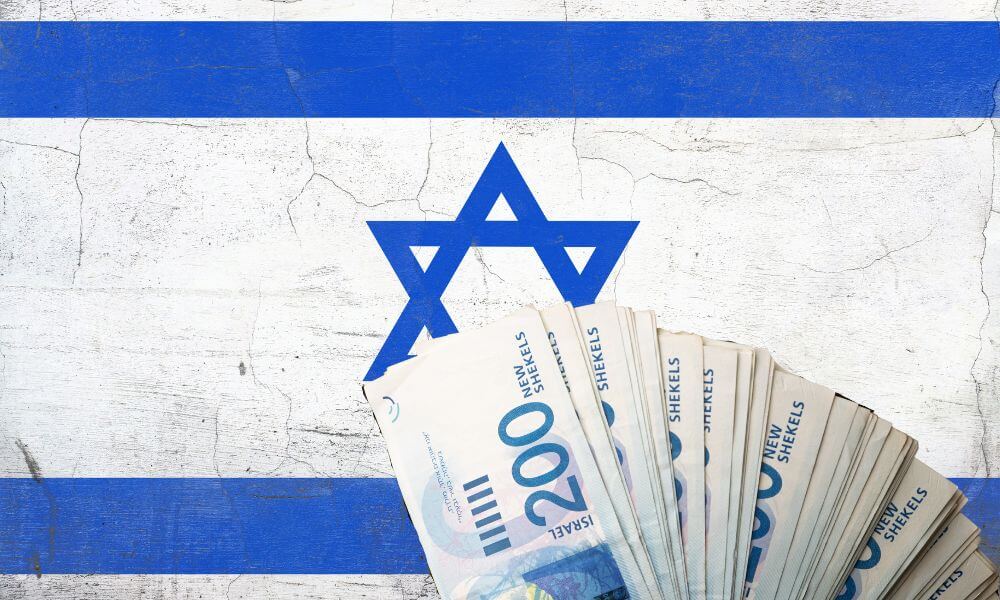The currency of Israel is the new Israeli shekel, also simply known as the shekel. This is also used as legal tender in the Palestinian territories in the West Bank and Gaza Strip. A shekel is divided into 100 agorot. It has been in use since 1986 when it replaced the old shekel.
The modern state of Israel has used a few different currencies over the course of its short history, though the one that is firmly established today is the new Shekel.
This is based on very old Mesopotamian currencies called the shekel which were used in Tyre, Carthage, and then in ancient Israel.
Let’s find out more.

What is the currency of Israel?
The currency of Israel is the shekel.
More specifically, the currency is officially known as the new Israeli shekel.
Generally, though, it is simply referred to as the shekel in everyday speech.
“Shekel” as a term for currency stretches back an awfully long way throughout time, having first been used in Mesopotamia.
They were usually made of silver and were originally unit of weight, very roughly equivalent to 11 grams.
They were used in ancient Israel under the Maccabees, who were a group of Jewish warriors that took control of Judea.
The modern nation state of Israel was created in 1948.
The first currency used was the Israel pound, also called the lira, and was used up until 1980.
Part of the reason it was abandoned was a fairly simple cultural one: lira was a Latin loanword with no Hebrew origin.
From 180 until 1985, then, what is now called the old Israeli shekel was used.
This shekel had lost as much as half its value due to inflation by the end of 1980, and continued to fall dramatically over the next five years.
So, in 1985, the economic crisis had effectively come to its head and a solution was needed.
The Bank of Israel and the government introduced careful, conservative fiscal policy with the new currency in and introduced a variety of economic reforms to avert the worst consequences of the last five years of economic disaster.
The so called Economic Stabilization Plan of 1985 successfully contained inflation and the new shekel was circulated.
Since then, the shekel has been fairly stable and today is in a relatively strong state on the global stage, though there remain questions about the future of the currency.
Is shekel a strong currency?
It’s worth noting right away that the strength of a currency isn’t always a simple numbers game; different analysts and economists may have differing views on the strength of a currency.
That said, most are in general agreement that the new Israeli shekel is among the strongest currencies in the world, and is incredibly reliable today.
It is at a 25 year high against the dollar as of today, and the Deutsche Bank of Germany ranked it as the second-strongest currency in the world.
Strengthening against the dollar is one of the best metrics of the shekel’s strength, since over the past decade it is virtually the only major currency to have done this.
It has advanced 4.2%, making it today one of the top emerging currencies even after Israel’s long history of economic strife.
It has overall strengthened 5.1% over the basket of the world’s major currencies and thus is in one of the strongest positions of any currency in the world.
Again, though, economic forecasts can focus on different things depending on who is asked or what factors are taking into account, so it’s not always necessarily a completely clear cut case—some believe it is beginning to fall.
Is the shekel falling?
The shekel is currently at a three year low against the dollar, though overall it is still in a higher position.
So, at best, the strength and growth of the shekel is certainly slowing down, and this may be a forecast of worse economic downturn to come.
For the moment, though, in all practical terms, the shekel is a very strong currency and will remain so for many years to come—but its growth may be slowing.
It’s all relative, then, and often a case of perspective; it may be said to be slowing, rather than falling.
What is the best currency to take to Israel?
Obviously you will need new shekels to pay for things in Israel.
The question is which currency will get you good rates when you arrive.
It is not particularly likely that you’ll be able to get access to shekels in your home country if you are not nearby Israel.
For the most part, your best option is going to be US dollars. If you’re able to convert to US dollars before you leave, you’ll get great conversion rates for shekels when you arrive in Israel.
Equally, though, modern Israeli ATMs are able to give you shekels in most cases with only a small fee, so you may not need to bring cash at all.
The future of the Israeli shekel, then, is uncertain.
It is and plainly has been quite strong for some time by many metrics, but at the same time it is also clearly weakening.
There are many concerns around Israel’s economic policy and the future of its economic decisions, but either way if you are simply thinking in terms of what you’ll need take or use in Israel, it’s the shekel—and whichever strong global currency is locally available to you for local conversion in Israel itself.

